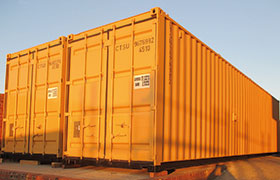

Bisha Mine is a large precious and base metal-rich volcanogenic massive sulphide (VMS) deposit located 150 km west of Asmara in Eritrea, East Africa. Deposit mineralisation consists of gold and silver oxides, in addition to copper and zinc massive sulphides.
After two years of low-cost gold production, Bisha Mine transitioned to low-cost, high-grade copper production in 2013. Starting in 2016, Bisha will also produce zinc concentrate. Over the remaining life of the mine, Bisha is forecast to produce over 130 million kilograms of copper and about 1 billion kilograms of zinc. Further resource potential exists at depth and from nearby discoveries within the company’s licensed areas.
The new facilities will include a zinc flotation plant, reagent handling area, workshops, concentrate thickening and storage, zinc concentrate loading facilities and support infrastructure. EPCM contractor, South African company SENET, was also responsible for the EPCM scope of work on the original Bisha plant.
Iritron provides the control
In early January 2015, Iritron was awarded the contract to provide process control systems for the new facilities and is leveraging an existing relationship with SENET to bring the project to successful fruition.
Alwyn Rautenbach, MD of Iritron, explains that the company will provide PLC and scada systems for the concentrator plant. The scope of work includes all the hardware, software and communications. All components will be housed in containerised control system units (I-Rooms), thus enabling greater mobility on the large and sprawling site. Containerisation provides the mine with greater flexibility, with all similar containerised process control units linked to the centralised control room.
The PLC is from the Schneider Modicon Quantum range, using TeSysT Intelligent overloads on an Ethernet network, and is an extension of the existing PLCs utilised in other sections of the overall Bisha project. The scada system is Wonderware Intouch with a Wonderware Historian.
Rautenbach says that provision has been made for logical simulation of the motor control systems when start-up on, for example, the mills and conveyors, is implemented. This facility will allow simulation of analog values to validate the PLC and scada programs against client specifications.
Project goals
The main objectives of the process control system are to provide streamlining, increase productivity and throughput, and to minimise downtime. Iritron is also responsible for executing standardised integration on all third-party vendor system mechanical packagings. This provides a logistical challenge, as one would expect from the mammoth task of overseeing the collaboration of multiple packages to specified standards, but will be readily expedited by Iritron based on the company’s previous experience and expertise on similar projects.
As a turnkey medium and low-voltage solution provider, Iritron is also responsible for supplying the motor control centres for the project, including variable speed drives and soft starters from the Schneider range. Another element in the scope of work is the supply of E-rooms and electrical substations that will house all electrical components in a container.
Rautenbach points out that the project has been characterised by high levels of cooperation and teamwork. A strong relationship with SENET and the client have ensured that all work is expedited timeously and without incident. Regular conference calls between the stakeholders address any concerns and queries as they arise, and allow prompt action to be taken.
Installation on the project will be undertaken by a third party, with Iritron returning to site for the final commissioning in the first half of 2016.
For more information contact Alwyn Rautenbach, Iritron, +27 (0)12 349 2919, alwyn.rautenbach@iritron.co.za, www.iritron.co.za
| Tel: | +27 12 349 2919 |
| Fax: | +27 12 349 1609 |
| Email: | info@iritron.co.za |
| www: | www.iritron.co.za |
| Articles: | More information and articles about Iritron |
© Technews Publishing (Pty) Ltd | All Rights Reserved